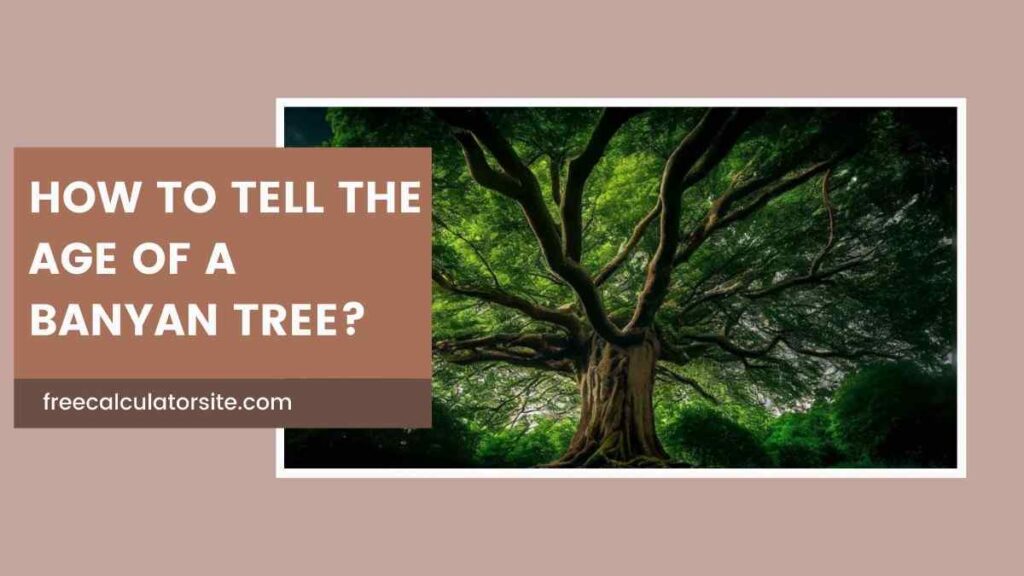
Banyan trees are among the most iconic and fascinating trees in the world, often associated with sprawling canopies, large aerial roots, and a sense of ancient mystery.
With their unique growth pattern and significance in various cultures, banyans have long captured the attention of people interested in nature and history.
However, determining the age of a banyan tree is challenging since they lack traditional growth rings found in other tree species, such as oaks or pines.
This article will explore the methods and challenges associated with estimating the age of a banyan tree, offering insights into how you might assess the age of these majestic trees.
Why Traditional Methods Don’t Work
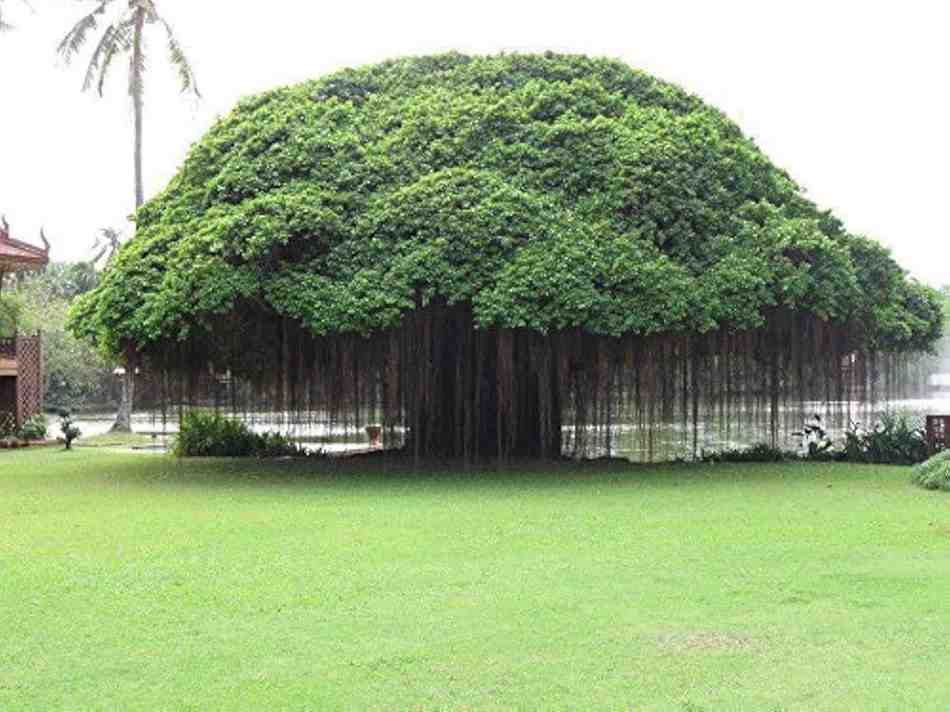
In many tree species, age can be estimated by counting the annual growth rings in the trunk—a method known as dendrochronology.
Each ring represents a year of growth, allowing scientists to determine the tree’s age with remarkable precision.
However, banyan trees (from the Ficus genus, particularly Ficus benghalensis) do not produce such rings.
This absence of visible growth rings is due to the tree’s unique growth pattern and tropical habitat, where seasonal changes that produce rings in temperate trees are less pronounced.
Instead of growing vertically in a single trunk, banyans spread horizontally, sending out aerial roots that can develop into secondary trunks over time.
This growth pattern creates a vast, interconnected system of trunks and branches, making it difficult to determine the starting point of the tree or its exact age using conventional methods.
See Also: How to Tell the Age of a Deer
Factors Affecting Banyan Tree Growth
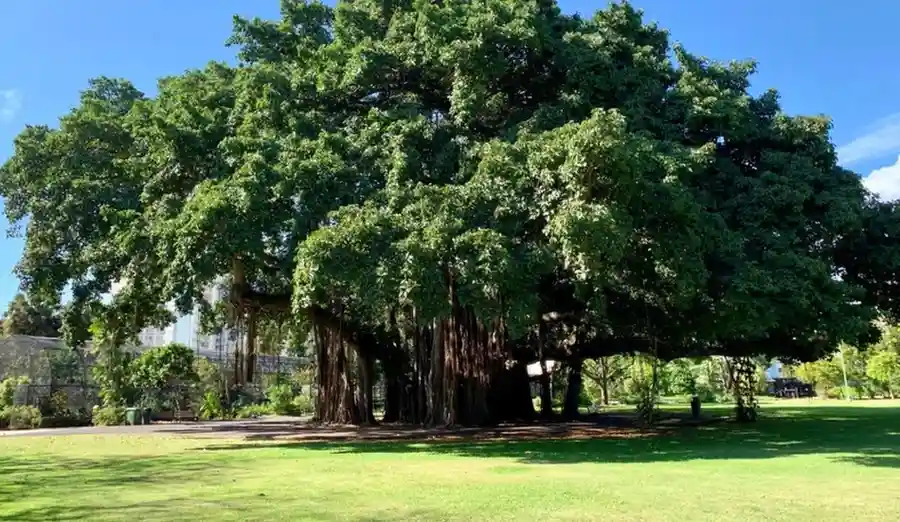
Several factors affect the growth rate of banyan trees, adding to the complexity of age estimation.
Some of these factors include:
- Climate and Rainfall: Banyan trees thrive in tropical and subtropical climates with high humidity. Wetter climates often promote faster growth, meaning banyan trees in these regions may grow faster than those in drier areas.
- Soil Quality: The nutrient composition of the soil can greatly impact a banyan tree’s growth rate. Rich, fertile soils will promote faster and more robust growth, while poor soils might slow down the development process.
- Space and Competition: Banyans need ample space to expand and develop their unique canopy structure. Trees that grow in dense forests or crowded spaces may grow slower or alter their growth pattern to accommodate other vegetation around them.
- Environmental Stressors: Natural events, such as storms, droughts, and human interference, can impact the growth rate of banyans. Trees that experience frequent disturbances may exhibit irregular growth patterns, further complicating age estimation.
Given these influences, estimating the age of a banyan tree is a process that requires a multi-faceted approach.
Here are several methods that can be used to make an educated guess about a banyan tree’s age.
Methods for Estimating the Age of a Banyan Tree
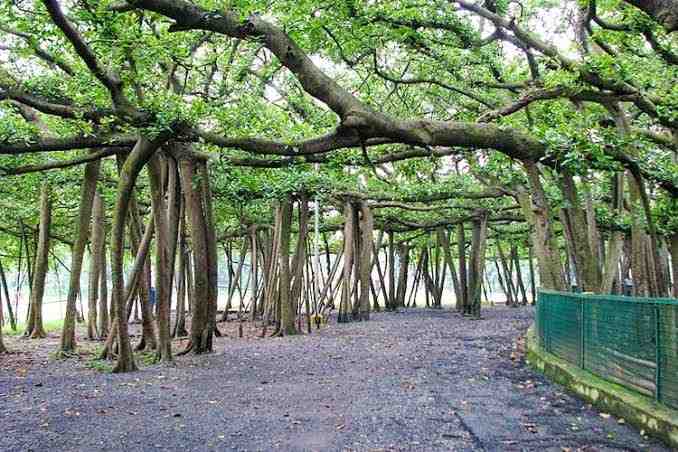
1. Measuring the Girth of the Trunk
One of the most accessible methods for estimating the age of a banyan tree is to measure the girth, or circumference, of its main trunk.
Since growth rings are absent, the girth measurement is compared with growth data collected from other banyan trees over time.
Studies have indicated that banyan trees generally grow between 0.75 and 1 inch (about 2-2.5 cm) in trunk diameter each year.
By measuring the girth and dividing it by this annual growth rate, you can get a rough estimate of the tree’s age.
Example Calculation: If a banyan tree has a trunk girth of 100 inches, it may be approximately 100-133 years old, assuming a growth rate of about 0.75 to 1 inch per year.
However, remember that growth rates vary significantly, and this approach only provides an estimate.
2. Examining the Size and Number of Aerial Roots
A defining feature of banyan trees is their aerial roots, which descend from the branches to the ground, where they take root and eventually thicken into secondary trunks.
As a banyan tree ages, it generally develops more aerial roots and secondary trunks, expanding outward and creating a larger canopy.
Observing the number, size, and distribution of these aerial roots can give clues to the tree’s age.
Older banyan trees typically have more established aerial roots that have thickened significantly over the years.
3. Studying the Canopy Spread
Banyan trees have some of the largest canopies in the world. As they age, their branches extend horizontally, creating a broad canopy supported by their aerial roots and secondary trunks.
Measuring the diameter of the tree’s canopy can offer clues to its age, as older banyan trees tend to have wider and more expansive canopies.
The canopy diameter can be correlated with age based on studies of known banyan tree specimens.
For instance, a banyan tree with a canopy diameter of around 100 feet might be several hundred years old.
4. Researching Historical Records and Local Lore
In some parts of the world, especially in India, banyan trees hold cultural and historical significance.
Some of these trees have been documented or referenced in local records, historical accounts, or folklore, providing approximate dates for when they were planted or first noted.
Consulting local records, speaking with community elders, or looking up historical references may give a clearer idea of the tree’s age.
5. Scientific Analysis of Soil and Growth Patterns
In cases where more precise age determination is required, scientists may use advanced techniques like radiocarbon dating on the oldest roots of the banyan tree.
While this method isn’t commonly used due to the complexity and cost, it can provide a more accurate age estimate in scientific studies.
Additionally, analyzing the soil layers around the oldest parts of the tree may reveal information about the growth timeline and environmental conditions that influenced its development.
Also Read: How to Tell the Age of a Puppy
The Challenge of Precision in Age Estimation
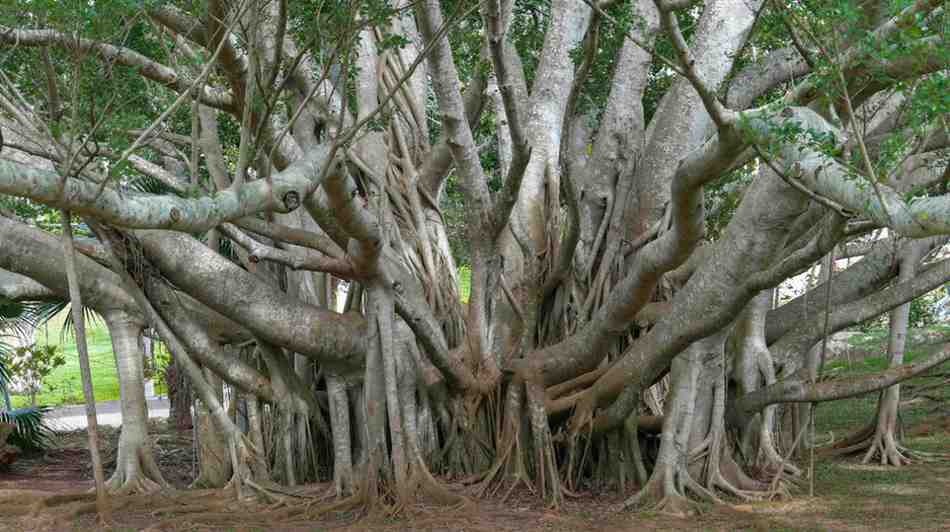
Despite these methods, accurately determining the exact age of a banyan tree remains challenging.
Each method provides only an estimate, and the results can vary widely depending on the tree’s environment and growth conditions.
Furthermore, banyan trees grow in complex patterns, and their multiple trunks and spreading canopies make it hard to identify a singular “starting point” for measurement.
It’s also essential to recognize that growth rates fluctuate over time.
A young banyan tree may grow quickly, while an older tree may slow down due to resource constraints or environmental factors.
As such, a multi-method approach that combines girth measurement, canopy spread, aerial root examination, and historical research will likely yield the most accurate results.
Conclusion
The banyan tree’s age can be an elusive mystery, but with careful observation and a bit of scientific insight, a reasonable estimate is achievable.
By measuring the girth, observing the size and number of aerial roots, examining the canopy spread, and exploring local historical records, you can piece together clues to the tree’s age.
Understanding the age of a banyan tree deepens our appreciation for these ancient giants, whose presence often spans centuries.
Though they may not reveal their secrets as easily as other trees, banyans remind us that nature’s complexity and resilience are worth celebrating.
With patience, curiosity, and a blend of science and folklore, we can connect with the history held within these incredible trees.

Akash Singh is a finance enthusiast who shares valuable insights on various calculators.
